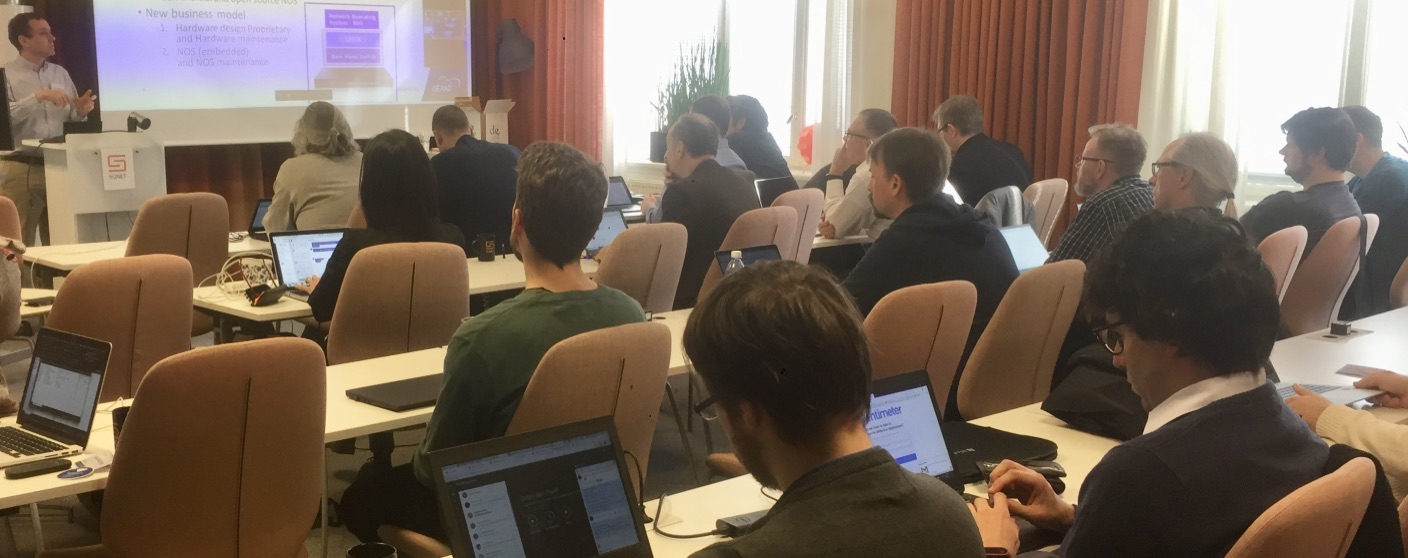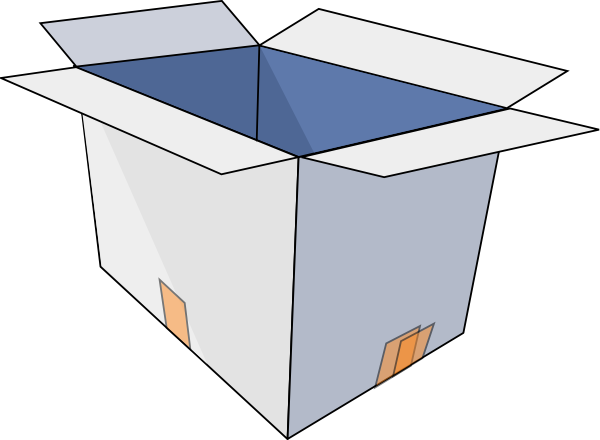SUNET welcomed the 2nd SIG-NGN meeting to Stockholm on the 4-5 April 2019 with over 65 enthusiastic participants (more than forty in the room and 25 remote participants).
“Whiteboxing”
The day kicked-off with a whiteboxing workshop. This session presented the ongoing work of the new GÉANT GN4-3 project in the area of whiteboxing and P4 and to solicit input and feedback from the SIG-NGN community on uses cases and services.

In-depth coverage continued after the break with Xavier Jeannin from Renater on Data plane programming, his colleague Frédéric Loui announced the Router for Academic R&E (RARE) project and work plan, and Marco Savi from Fondazione Bruno Kessler on DDoS mitigation with P4 which was a research collaboration with PSNC.
The afternoon of ‘whiteboxing’ continued with SIG-NGN and the discussion of the mornings events.
With presentations from the London Internet eXchange (LINX) on the Disaggregated model for their network refresh, a developer and practitioners perspective on P416 for network construction, research into Performance tuning a P4 Compiler and a series of presentations from a research network operator on technologies in their next generation production network and High-Touch Services.
This sparked significant discussion on software becoming the new lock-in as the options for whitebox hardware shift the landscape to a wider range of vendors. The discussion continued into the evening at Urban Deli where SUNET hosted a dinner for attendees.
Optical Networking
Friday morning focused on the optical side of the network with CESNET presenting their Time and Frequency Infrastructure and Testbed and how they measure and analyse non-data applications.
Kent Lidström from Smartoptics showed how disaggregated optical systems are bringing disruption to the optical side of the network in the same way that whiteboxing is changing the landscape for the IP layer.
Guy Roberts of GÉANT presented how the GÉANT lab automation and network evolution will be validated as a disaggregated optical system is deployed and how an optical time frequency service providing improved precision can be deployed on this network.
Finally, Rob Smets from SURFnet talked about Multi Service Agreements and participation in the Open Reconfigurable Optical Add/Drop Multiplexers (OpenROADM) user group.

Having participation from more than 20 organisations from a combination of an IXP, developers, researchers, vendors and network operators, the special interest group is meeting many of its targets in supporting a diverse community.
In closing the event, Rob Evans from Jisc thanked everyone that attended in person and especially those that attended remotely. He called on participants to keep working on supporting a wide pool for developing the Next Generation Networks to support our community and highlighted the need to add gender diversity to these considerations. He called on participants to return to their organisations and support a wider array of attendees for our next meeting.
Up next…
The next SIG-NGN meeting is planned for September/October 2019 and we’re seeking a host. If you’re interested, contact the NGN Steering Committee and remember to sign up to the NGN mailing list to be informed of future events.
In addition to this special interest group on the Next Generation Networks, GÉANT is promoting the Next Generation Internet via a series of Open Calls to provide financial support for development work in this space.










Add Comment